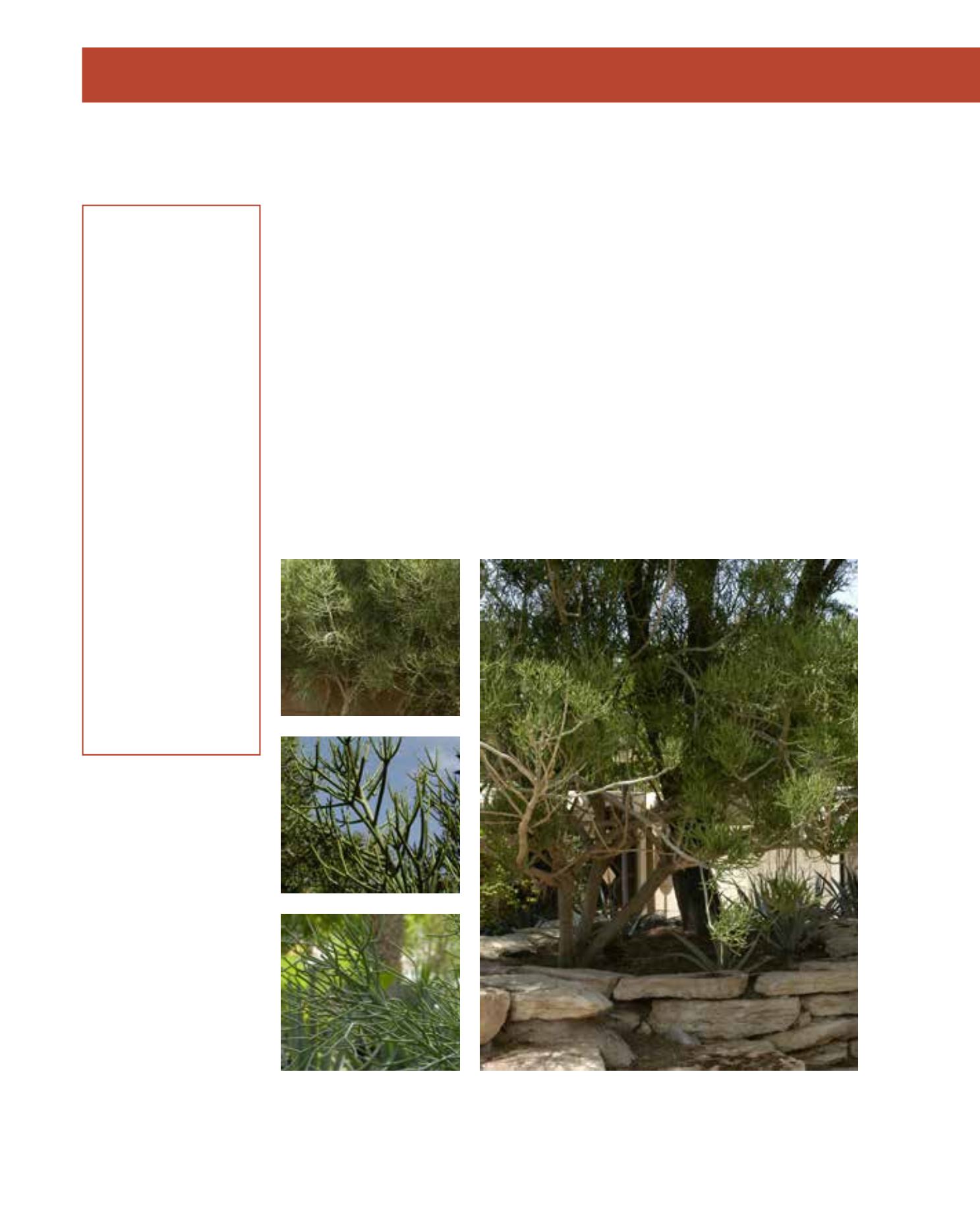

GENERAL
Origin
:
sub-tropical,
tropical
Vigour
:
fairly fast
growing
Humidity
:
very arid, semi-
arid, semi-humid,
very humid
Propagation :
sowing and
pricking out,
cuttings
Maintenance :
moderate
CONDITIONS
Urban climate :
resistant
Dessication :
resistant
Stagnant water :
vulnerable
Irrigation
:
low
Salinity/ppm :
moderate (2500
ppm)
Hardiness
:
-3°C
SHAPE
Type
:
cacti, succulents
Height
:
4 m-15 m
Spread
:
3 m-10 m
Foliage
:
semi-evergreen
FLOWER
Colour
:
pale green
Period
:
July - September
FRUIT
Type of fruit :
capsule
Fruit size
:
0.8 cm - 1.2 cm
Toxicity
:
highly poisonous
The Pencil Bush may be found growing wild in Madagascar and southeastern Africa, where it
sometimes forms large trees of 10 to 15 metres in height. In cultivation and especially in Arriyadh,
it is a multi-branched shrub with a noteworthy shape and some 4 metres in height. Its cylindrical
branches are dull green and measure about 8 mm in diameter, just like a common pencil. They
give this fast-growing plant the appearance of a giant round brush. Mature bark turns grey and
occasionally shows harmless swellings and black bands. The linear foliage is short-lived and lea-
ves small dents that give a pattern to the branches. In autumn, clusters of tiny yellow flowers ap-
pear without much visual impact. Subsequent capsules measure 12 mm across and dehisce while
still on the plant. Seeds, but also cuttings, are used to propagate the plant. Cuttings’ loss of sap
should first staunch in water and dry for a few days thereafter. Any injury immediately releases
latex that cause blisters on the skin and is poisonous if ingested. On the other hand, it is used
as an antidote for snake bites. Plants should not grow next to a pond, since they are toxic to fish.
Pencil Bushes tolerate some salinity, drought and, surprisingly, they tolerate poor drainage better
than other succulent shrubs. However, supplemental irrigation should be omitted in autumn and
ceased in winter in order to achieve healthy plants. The plant looks best amongst boulders in rock
gardens or grouped on embankments along roads, where it tolerates full sun.
141
Euphorbia tirucalli,
Euphorbiaceae
Pencil Bush
















